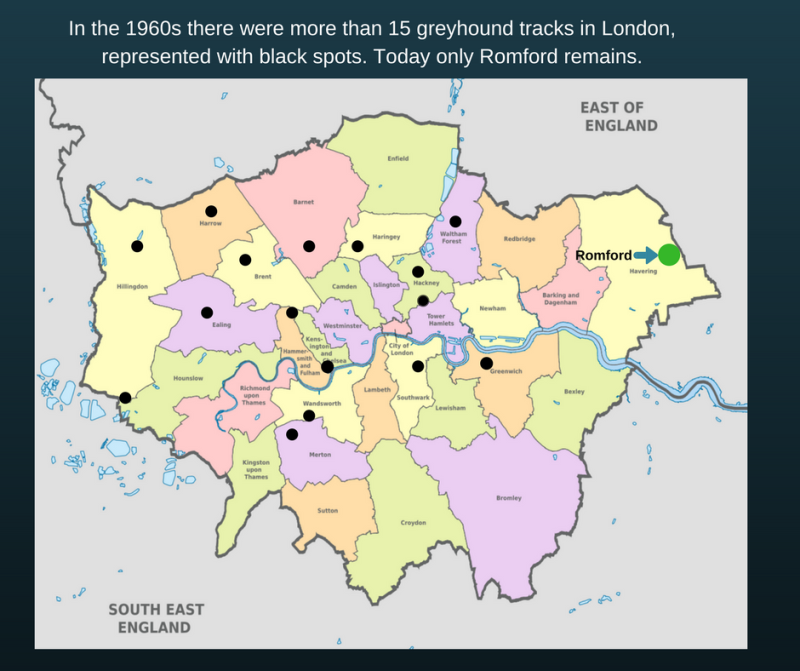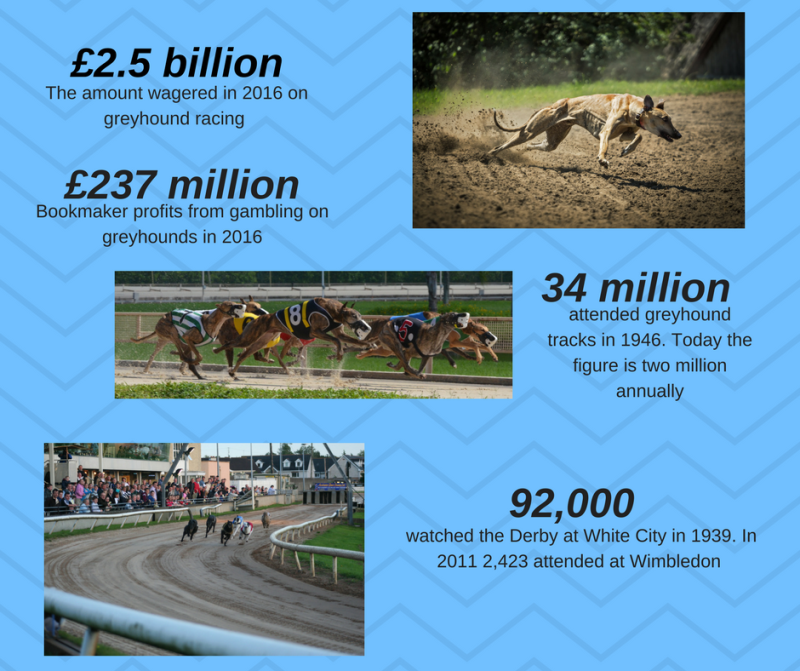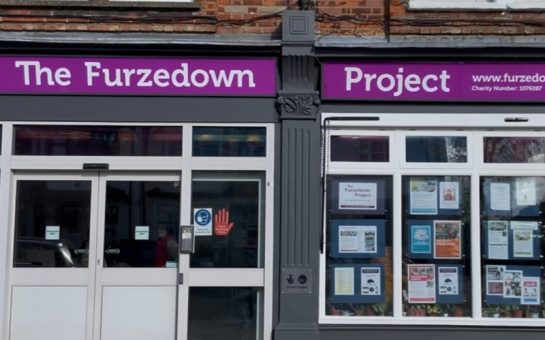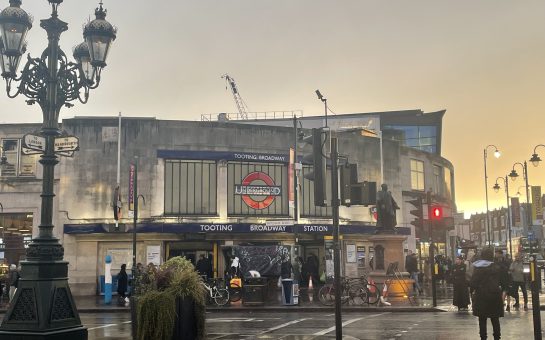The closure of Wimbledon greyhound track in March this year marked the end of an era in London.
Today there are no dog tracks in London, with the closest now in Romford in Essex.
While some will barely notice and others will be glad to see the back of a sport they deem brutal, the sharp decline in the sport in both London and nationally is a cause of deep sadness and regret for many.
It is easy to forget that 60 years ago greyhound racing was the second most popular sport in England after football.
The first modern-day track came in 1926 in Belle Vue, Manchester.
By the end of the next year there were 40 tracks across England and Scotland.
Punters flocked to them, driven primarily by the increased affluence amongst the working classes that allowed provision of leisure money.
At the 1939 Derby Final at the long-lost White City Stadium, London, 92,000 people attended.
These figures were no anomaly as by 1946 some 34 million attended the dogs annually.
At that time there were 15 greyhound tracks across London; there are now none.
So has Britain fallen out of love with the dogs?
Gamblers are still punting on them like they have for decades.

Only last year £2.5 billion was gambled annually with the bookmakers earning profits of £237 million on that.
Despite this, the money being bet online and in shops has ironically played as big a part as any in the closure of tracks.
The first nail in the coffin came with 1960 Betting & Gaming Act.
This introduced the first high street bookmakers, making it legal to go into a shop to place a bet for the first time.
Previously it had been illegal to gamble ‘off-track’, meaning that those fancying a flutter would have to go to the track in person.
The rising land values, especially in London, have been a pivotal reason for a number of track closures.
The White City Stadium is now occupied by the BBC media village, the old Wandsworth track is now a shopping centre while countless others, including Walthamstow, Clapton and Wembley have long been turned into flats.

Simon Banks, media and communications spokesman for the Greyhound Board of Great Britain, said: “I must emphasise that it is not to do with a decline in popularity, the problem is to do with rising property prices, especially in London, where it is hard to compete when the land can be turned into expensive apartments.
“We may need to look outside of cities – the answer could be to look at Brownfield sites.
“With the lack of almost any media coverage we are still the sixth most popular spectator sport.
“Our attendance levels are at a sustainable level.”
Another factor for the sports decline is the negative public image greyhound racing has long held, one of poor animal welfare which often lead to dogs being shot once they were retired.
In an increasingly liberal society many wanted nothing to do with an ‘inhumane’ sport.
While the sport is now tightly regulated, with impressive figures for re-housing dogs after retirement, many still find this hard to accept when added to with more recent reports of doping and race fixing.
While attendances may be at a sustainable level across the UK, they compare starkly to years gone by.
While more than 90,000 people watched the 1939 Derby, fewer than 2,500 turned up in 2011 at Wimbledon.
And whereas 34 million watched annually in 1946, less than two million did so last year.
With today’s youth seemingly disinterested in the sport and with no track left in the capital it seems that London’s long-running love affair with the dogs is well and truly over.




